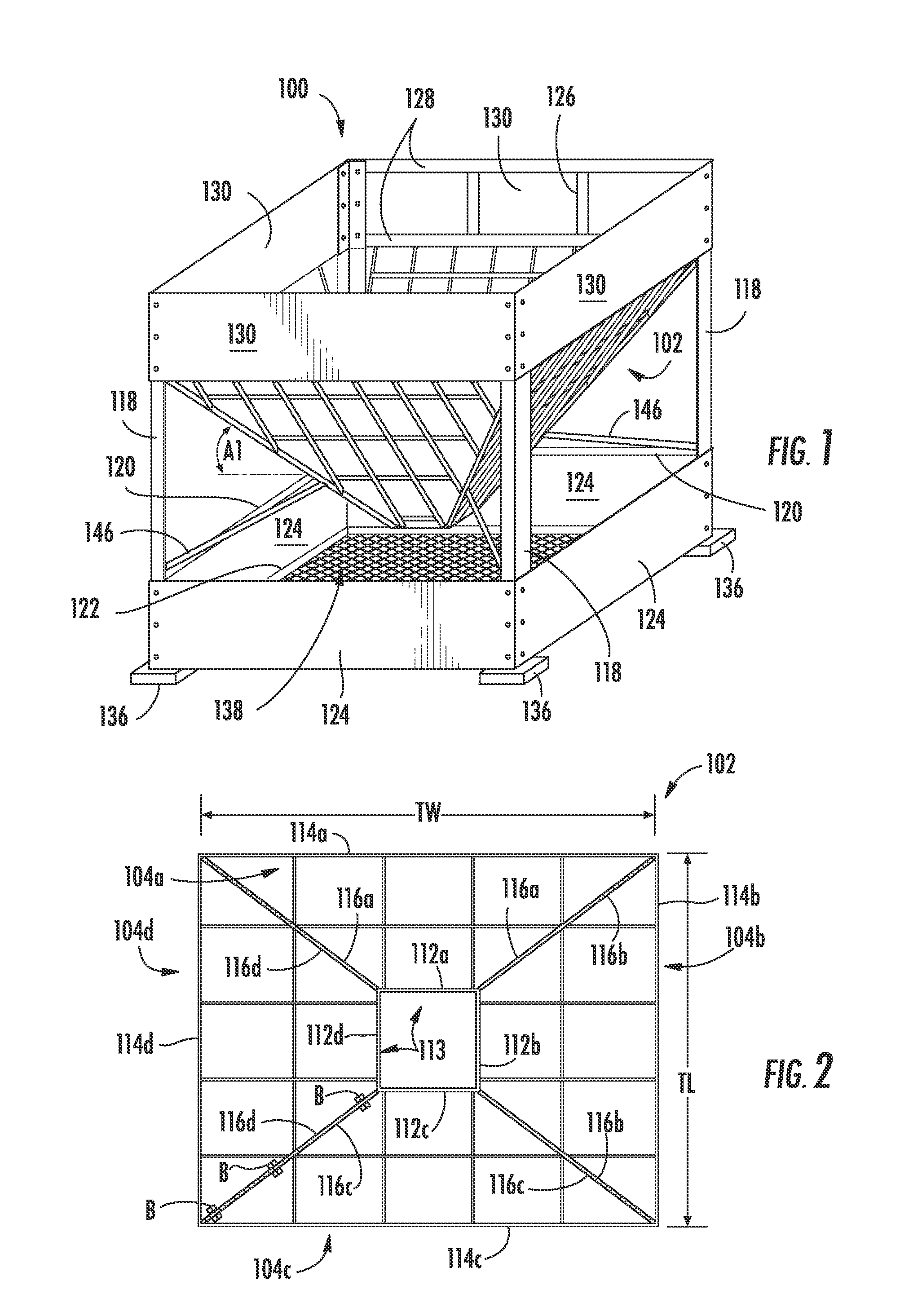Hay feeder
- Summary
- Abstract
- Description
- Claims
- Application Information
AI Technical Summary
Benefits of technology
Problems solved by technology
Method used
Image
Examples
Embodiment Construction
Summary of Features and Aspects of the Invention
[0061]The inventive improved hay feeder includes a hay holding cage that has a gridwork of horizontal as well as vertical bars that create openings sized to limit livestock to pulling out only a mouthful of hay at a time, thereby reducing wasted hay dropped on the ground. An optimum opening size is a rectangle that is about 7 to 8 inches on a side. Openings can be increased to as much as 10 inches square for the largest animals, and can be correspondingly reduced for small animals who have small muzzles, although reduced size isn't too important since the smaller animals are not able to grab too large a mouthful anyway. The rectangular shape is not required versus other geometries (e.g., circle, octagon, etc.) but is the simplest format for a grid and thus is preferred.
[0062]A first preferred embodiment is the square feeder 100 wherein the shape of a hay cage 102 is an inverted pyramid-like funnel with four gridwork sides 104 and a tru...
PUM
 Login to View More
Login to View More Abstract
Description
Claims
Application Information
 Login to View More
Login to View More - R&D
- Intellectual Property
- Life Sciences
- Materials
- Tech Scout
- Unparalleled Data Quality
- Higher Quality Content
- 60% Fewer Hallucinations
Browse by: Latest US Patents, China's latest patents, Technical Efficacy Thesaurus, Application Domain, Technology Topic, Popular Technical Reports.
© 2025 PatSnap. All rights reserved.Legal|Privacy policy|Modern Slavery Act Transparency Statement|Sitemap|About US| Contact US: help@patsnap.com



